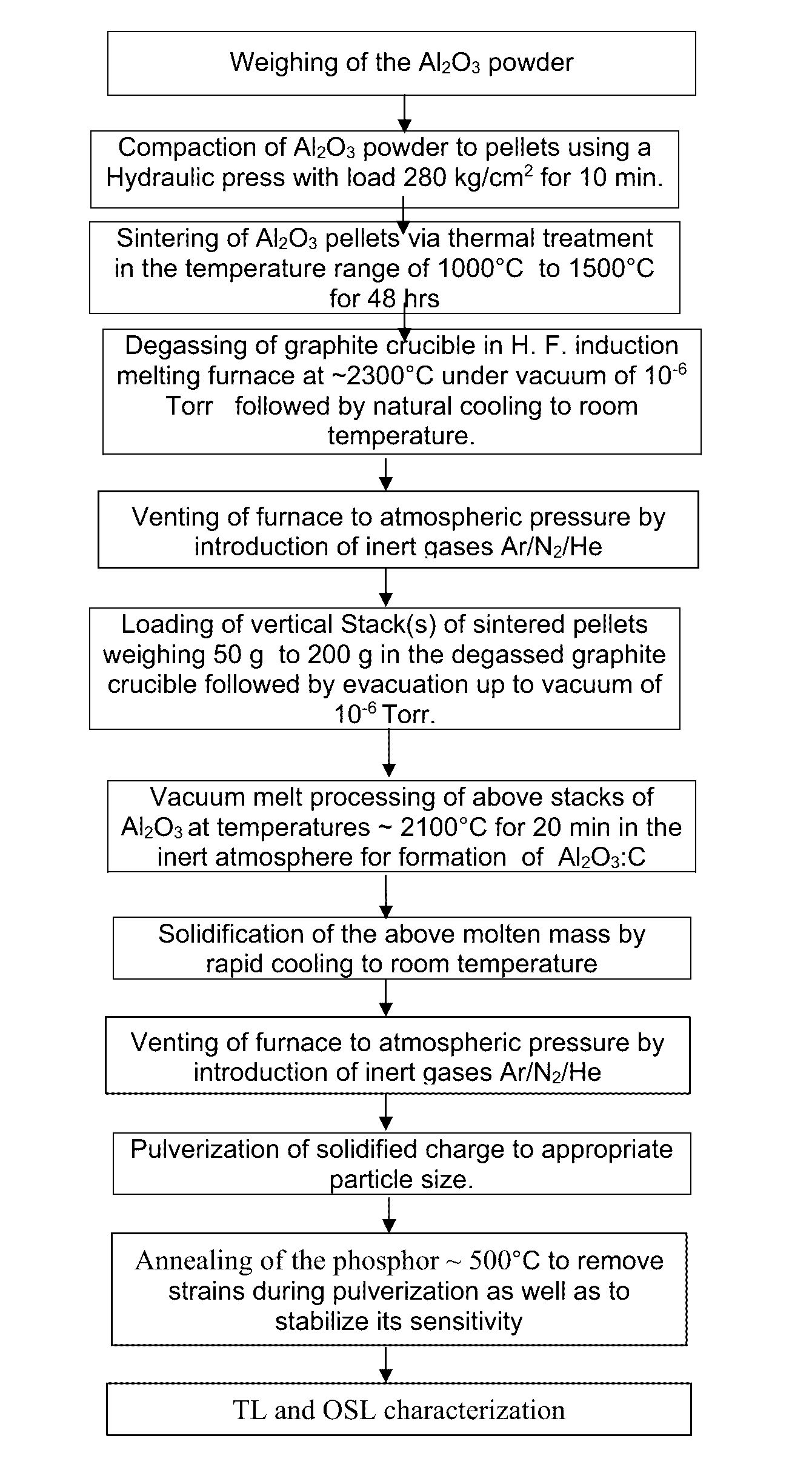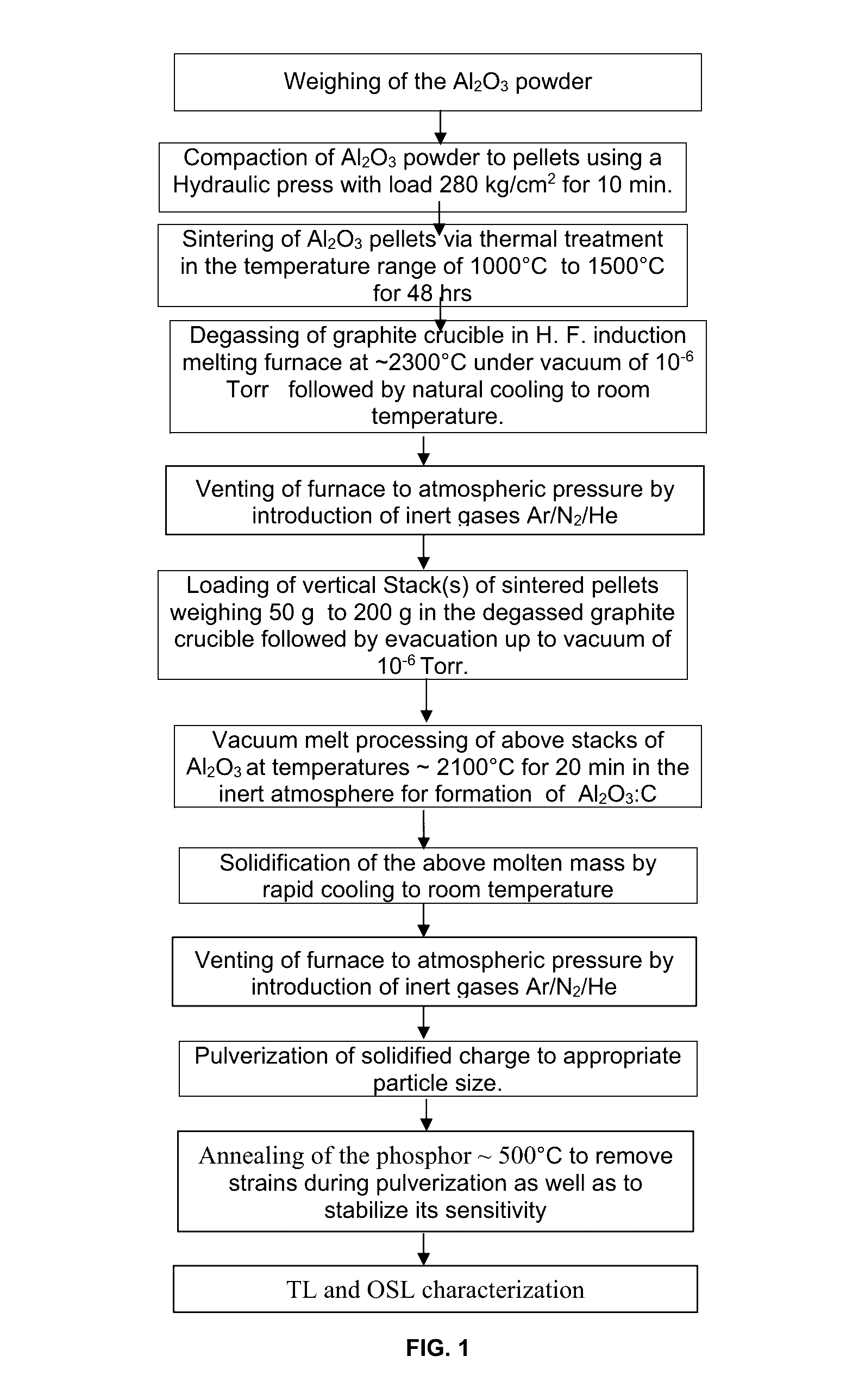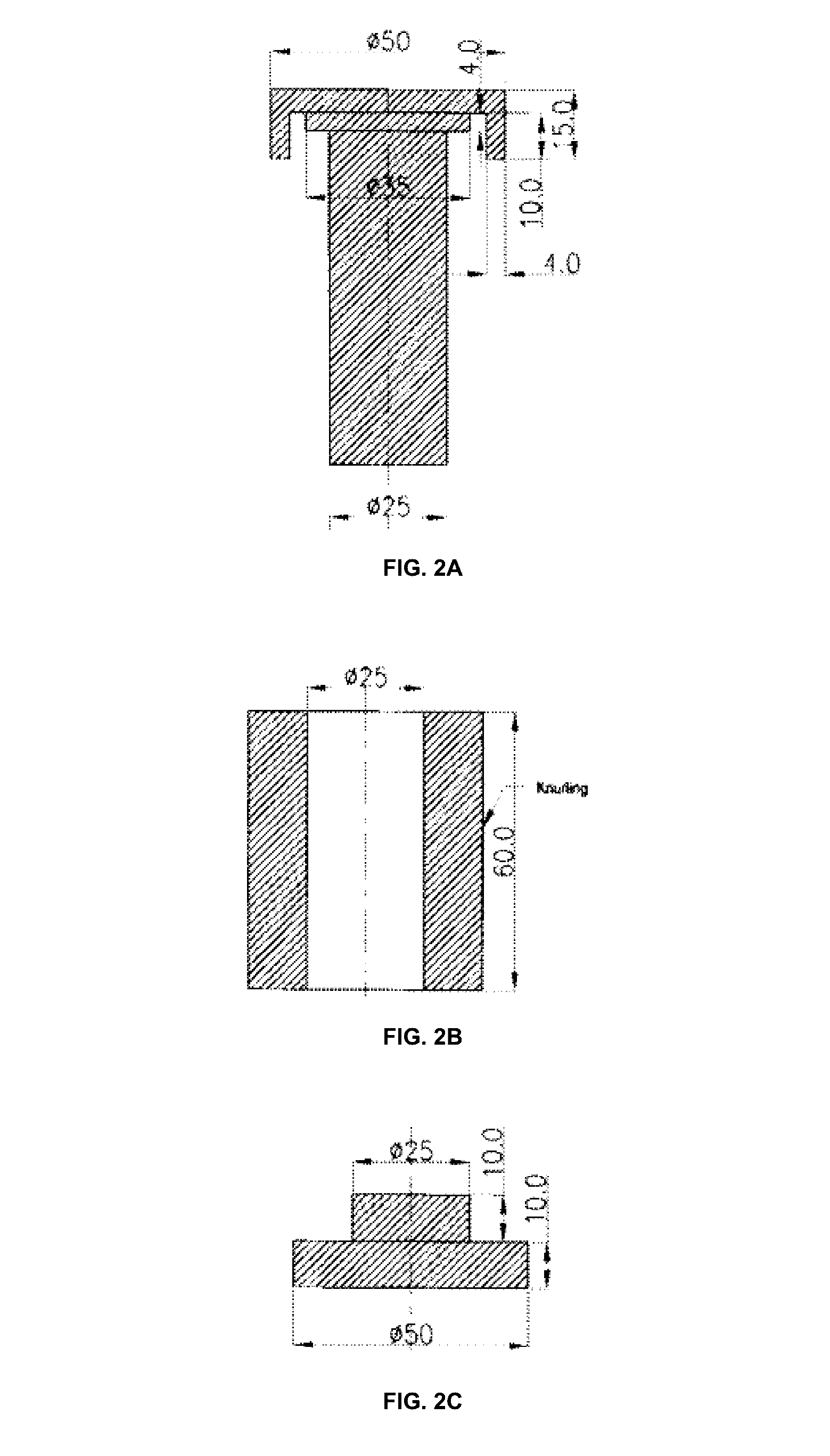Method for large scale synthesis of optically stimulated luminescence grade polycrystalline ceramic material
a technology of optical stimulation and polycrystalline ceramics, applied in the field of methods, can solve the problems of high precision, inherently costly equipment and associated overhead, and the composition of the crystal so grown is not constant, and achieves the effects of simple, simple, effective and economical process, and simplified structur
- Summary
- Abstract
- Description
- Claims
- Application Information
AI Technical Summary
Benefits of technology
Problems solved by technology
Method used
Image
Examples
example
[0066]The method of producing dosimetric grade polycrystalline Al2O3:C by using alumina powder as described in the present invention was carried out to realize the large scale production of luminescent material having pre-existing luminescence centers for uses, including but not limited to personnel dosimeters, environmental dosimeters and high dose dosimeters through optically stimulated luminescence. The non limiting process flow as presented in the present example shows the involvement of different process parameters for said production of the dosimetric grade polycrystalline Al2O3:C.
[0067]Step 1: Highly pure alumina is mixed with desired dopant in the concentrations in the range 0.01 wt %-0.5 wt % by means of a Planetary Ball-mill.
[0068]Step 2: The mixture as prepared in step 1 without addition of binder, is placed in a powder compactor having a diameter about 25 mm (FIG. 2A, FIG. 2B and FIG. 2C) and then is subjected to a load in the range 50-280 kg / cm2 for durations of 5-25 mi...
PUM
| Property | Measurement | Unit |
|---|---|---|
| temperature | aaaaa | aaaaa |
| temperature | aaaaa | aaaaa |
| melting point | aaaaa | aaaaa |
Abstract
Description
Claims
Application Information
 Login to View More
Login to View More - R&D
- Intellectual Property
- Life Sciences
- Materials
- Tech Scout
- Unparalleled Data Quality
- Higher Quality Content
- 60% Fewer Hallucinations
Browse by: Latest US Patents, China's latest patents, Technical Efficacy Thesaurus, Application Domain, Technology Topic, Popular Technical Reports.
© 2025 PatSnap. All rights reserved.Legal|Privacy policy|Modern Slavery Act Transparency Statement|Sitemap|About US| Contact US: help@patsnap.com



